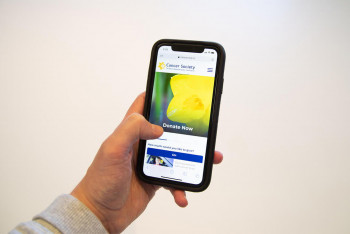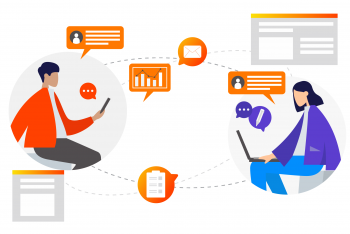It's about looking at the big picture. We explore the differences between CX and UX and how both are important to the success of your business.
The Big Picture
When storyboarding out potential user journeys for Metlink, we learnt a lot about trying to see the big picture - and understanding when the user's journey really ends. Initially we were only looking at a user's journey from a website facing point of view, we for example a user will visit www.metlink.org.nz, enter in some journey details, process the information, and then exit the website. But obviously the user's journey is really only just starting. They still need to travel to their stop, catch their mode of transport whether it be bus, train or ferry, and then arrive at their destination.
This is essentially the point of difference between the user experience (UX) and the customer experience (CX).
What is User Experience?
The UX is the customer/user’s experience with a specific product, for our purposes, a website, app, or software. The design of the interface — its usability, information architecture, navigation, comprehension, learnability, visual hierarchy, etc. — all combine to create the UX, whether positive or negative.
The goal of the UX designers, then, is to make sure the brand designs products that solve the right problem in an efficient and enjoyable manner.
What is Customer Experience?
CX has a greater scope: it is the customer’s experiences with all channels of the brand, including a specific product like an app. CX is an umbrella concept encompassing all channels and all products within the same brand, and how the user feels about them.
When storyboarding out potential user journeys for Metlink, we learnt a lot about trying to see the big picture - and understanding when the user's journey really ends.
Initially, we were only looking at a user's journey from a website facing point of view, we, for example, a user will visit Metlink, enter in some journey details, process the information, and then exit the website. But obviously the user's journey is really only just starting. They still need to travel to their stop, catch their mode of transport whether it be bus, train or ferry, and then arrive at their destination.
This is essentially the point of difference between customer experience (CX) and the user experience (UX).
Great CX gives a user/customer the ability to:
- Have a pleasant, professional, helpful interaction with organization/company representatives
- Feel generally positive about the overall experience with that organization/company and everything associated with it
Great digital UX gives a user/customer the ability to:
- Find information on a website quickly and easily
- Complete a desired task with ease
- Search Web pages with ease
For satisfied customers, you need consistency between the CX and UX. Customers interpret all the events as the overall brand experience. They’re either satisfied, or they’re not.

When CX and UX come together:
A great example of where CX includes UX is in the airline industry - a highly competitive area which demands a high level of customer service and satisfaction. Air New Zealand has multiple tools to help users book flights, such as a responsive website and even a mobile app - and thanks to great UX, people can purchase tickets within a couple of clicks or taps, and even go so far as to select seats or set preferences.
However, Air New Zealand realise that this will all be pointless if the customer turns up at the airport and is unable to effectively get their boarding passes, check their baggage and find their terminal. This is where CX comes in, and many successful airline companies have fine-tuned the overall experience with the help of check-in kiosks and clear signage in airports, to ensure that it's enjoyable and efficient from start to finish.
Conclusion
CX design and UX design are certainly different. However, if you want to win the loyalty of your users and turn them into customers, they shouldn't be considered exclusive disciplines.
Somar Digital considers the big picture or overall customer experience when helping our clients solve their problems. Rather than just focus on the interface or a particular page, we discuss the user's overall journey or purpose and determine exactly where their start and endpoints are.
By doing so, we can often help solve much bigger problems or inject something unexpectedly great into the experience, and that's when the customer experience improves.




